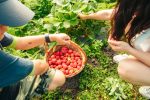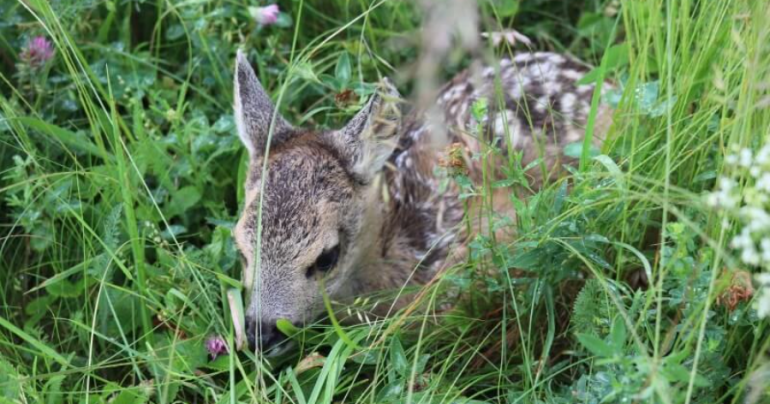The Mendel University Agricultural School in Žabčice (ŠZP) is starting to use an automated sensor system on its mowing equipment, which will detect wildlife in the undergrowth while tending fields. ŠZP is only the second company in Brno to use this type of technology.
The farmers would like to use the sensor for the first time during the second hay cutting of the year, which is taking place in the next few days. This year’s novelties also include the use of drones and specially trained dogs to detect animals on the farmland. By combining these methods, it will be possible to eliminate the loss of wildlife caused by the haymaking process.
The risk of a collision with wild animals during mowing mainly concerns young ungulates and furry and feathered animals. When the machine approaches, the adult runs away and the cubs crouch in place, so they cannot be seen.
“We are acquiring a sensor bar for mowers to cut fodder – alfalfa or grass – which will detect an animal in the undergrowth and give feedback to the tractor driver that something is in front of them,” said Jakub Doležal, director of ŠZP. “The sensor stops the machine directly, raises the bar, or gives an acoustic or optical signal to the driver, who can take the animal away and drive on.”
Until last year, wildlife in the fields in Žabčice during the mowing process was detected only in cooperation with hunters. “We have a reporting obligation agreement with the hunters. When we want to start mowing, it is necessary to announce it well in advance. The hunters will move into the given plot of land, push out the game, and we can then drive in with the tractor. Alternatively, we have feedback from them that the young are not yet in the stands, which is often the case when alfalfa is sown for the first time. We are starting to mow it very soon,” Doležal explained.
Last year the losses were in the order of units, this year the farmers want to prevent any loss at all, as much as possible.
Regarding the use of drones, since this year, company employees in cooperation with the university have been using them to map the terrain.
“Drones fly over the property every morning, and with the help of thermal cameras, we have an overview of whether there is wildlife in the forest,” said Doležal. “We have rescued eight fawns so far this year. The pilot marks the spot where, for example, the fawn is lying, so that we can carry it out in gloves and in a bale of grass outside the cut vegetation, where the adult doe will find it. The staff is are trained so they know how to behave. We treat each part of land specifically according to the location.”
Farmers enter alfalfa or grass stands for the last time in September and then only in May of the following year. In the meantime, there is a period of calm, when animals tend to inhabit these areas. Therefore, in addition to the methods mentioned above, agronomist Yvona Hiclová also started training her dog for this purpose this year. The dog’s scent is left in the area, keeping wild animals away.
However, if any are still there, the dog can find them and reveal them. “He goes against the wind and systematically searches the entire terrain,” said Hiclova. “When he encounters an animal, he exposes it and waits for me to come so that he does not stress the animal himself. Then we move on to the game. For example, when it is a pheasant, it usually rises and takes off. The dog remains calm, I tie him up and check whether there are any eggs or young specimens. And the same happens with roe deer.”
Portuguese and Hungarian hounds are specially bred to search for wild game; Hungarian hounds are also used within the Agricultural School.
The whole mowing takes one to two weeks, and takes place at least twice, sometimes even four times a year. “We are in an arid, warm region, which means that here in Žabčice we start about a fortnight earlier than in other regions of the republic. Each mowing takes place after about a month, when the moisture conditions are good, we mow four times, but we have also experienced five times a year,” said Doležal.
The school farm manages 2,265 hectares of agricultural land, of which 1,780 hectares are arable land and 230 hectares are permanent grassland.









